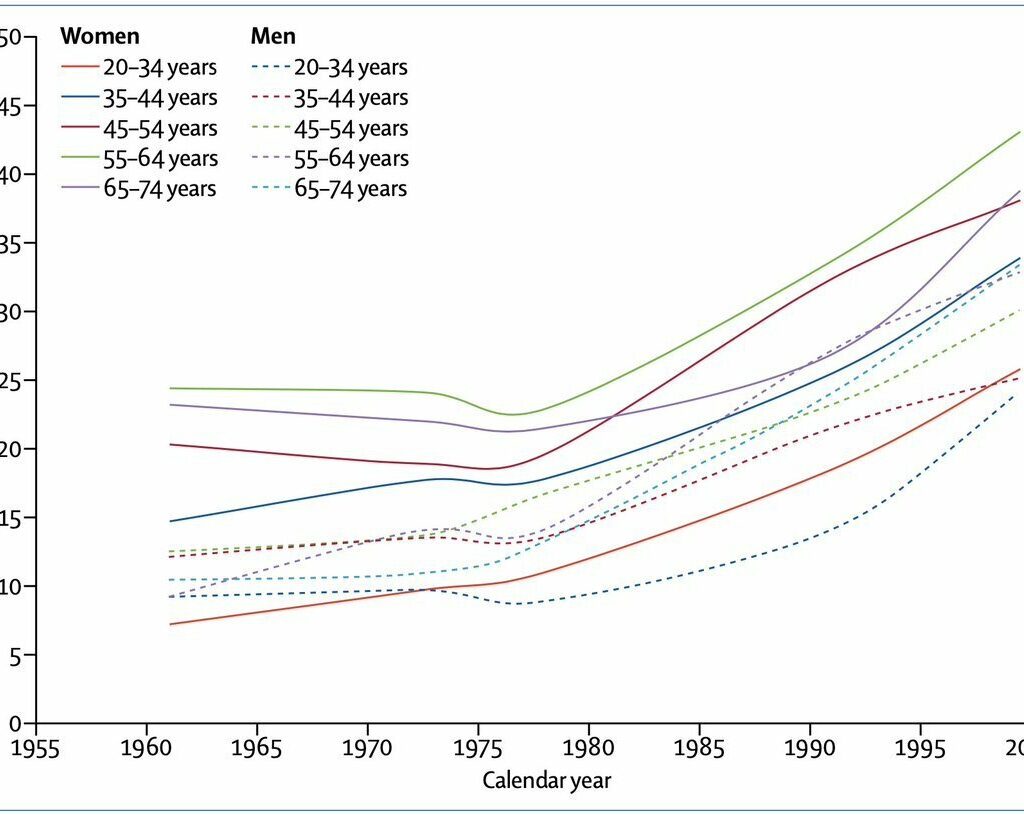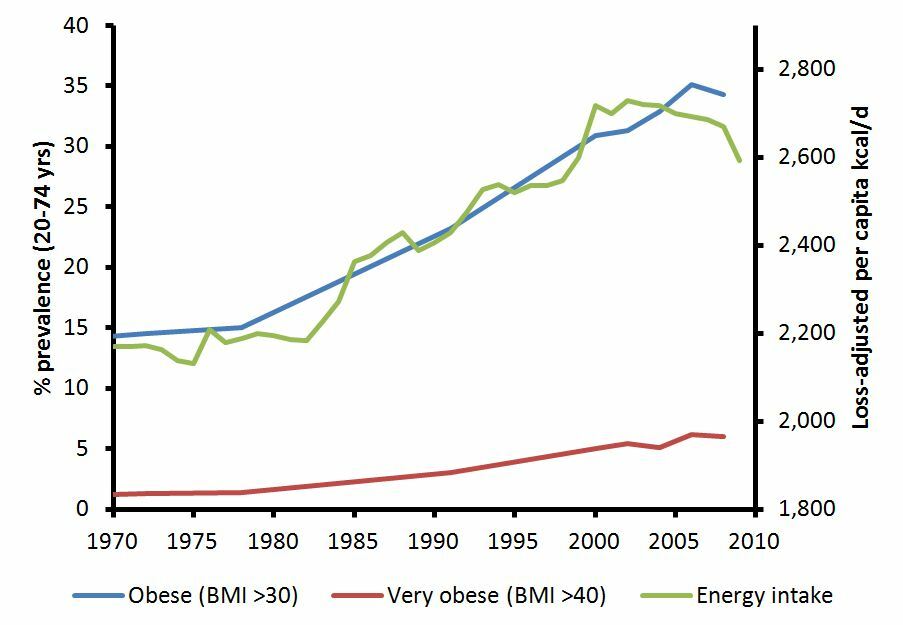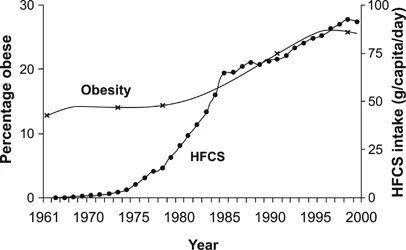The obesity epidemic in America and chronic illness have become very concerning, with over two-thirds of adults classified as overweight or obese. It’s no secret that our nation has a serious health crisis on its hands.
But what are the causes of this widespread issue?
While it’s easy to point fingers and blame individual choices, the truth is that there are deeper, more insidious reasons why Americans are becoming increasingly fat and sick.
The cause of obesity is multi-faceted, with a range of contributing factors that extend beyond simple overeating and lack of exercise.
Our modern lifestyle, with its conveniences and sedentary habits, fosters weight gain and chronic health conditions. Prioritize well-being!
The statistics are alarming: more than two-thirds of American adults are overweight or obese, and nearly half of all adults have at least one chronic disease.
With such grim figures, it begs the question: what exactly is causing this crisis? The answers lie in a combination of unhealthy lifestyles, sedentary behaviors, and most importantly, the insidious American diet.
Have you ever wondered why obesity and illness rates in America are skyrocketing, reaching unprecedented levels?
It seems like no matter how much we try to eat right and exercise, the problem only continues to worsen. Could it be that our very way of life is leading us down a path of sickness?
Childhood, adolescents, and adult obesity epidemic in America
It has reached staggering proportions, with 65% of American adults and 15% of children and adolescents classified as critically overweight.
This epidemic has far-reaching consequences, costing up to $190 billion each year and causing up to 2.8 million deaths in the US alone.
Many theories and studies have attempted to explain this troubling trend. Some point to the prevalence of fast food consumption, the lack of exercise, and the general absence of willpower.
However, the truth lies much deeper than that.
In 1979, the Grocery Manufacturers of America (GMA) aimed to stop the Federal Trade Commission (FTC) “from restricting television commercials of sugared products aimed at children”.
Not ironically, the graph shows it spiking at the beginning of the 1980s. Today, a significant contributing factor is the increase in sugar in almost everything consumed, and increased portion sizes over the years.

Americans eat a ton of food yearly, equal to a baby humpback whale or a 1979 Volkswagen Beetle. These larger portions lead to excessive calorie intake and weight gain.
The food industry, often referred to as “Big Food,” exerts significant influence by co-opting regulators, financing “shadow” groups, and even litigating against food regulations.

As you can see, the amount of calories increased significantly in the early 80s when food the government gave a green light by deregulation. Then, the new food pyramid was introduced telling us to eat more grains, meat, and dairy. Additionally, food manufacturers greatly increased portion sizes (energy intake) as well which further contributed to the problem.
It’s time to uncover the surprising truths hidden in our daily habits and confront the root causes of our obesity and illness crisis. Only then can we pave the way for a healthier future.
Decoding the Obesity Epidemic in America
Understanding the factors contributing to the obesity epidemic in America is crucial in addressing this growing public health issue.
One important measure used to assess weight and its impact on health is Body Mass Index (BMI).
BMI takes into account an individual’s height and weight and indicates whether they have a healthy weight.
A high BMI is associated with an increased risk of various health issues, including heart disease, type 2 diabetes, certain cancers, and sleep apnea.
Over 70% of US adults are overweight or obese, per CDC data. The statistics are staggering.
In the U.S., about 1 in 6 children are obese, with childhood obesity rates rising. This not only has immediate health impacts but also increases the risk of developing chronic diseases later in life.
Exploring the link between BMI, health effects, and alarming obesity statistics in America offers insights into the obesity epidemic.
Understanding BMI and Its Impact on Health
Body Mass Index (BMI) is a useful tool in assessing whether an individual has a healthy weight or is overweight. It measures height and weight, giving a value categorized as underweight, normal, overweight, or obese.
A high BMI is associated with an increased risk of various health issues. Excess weight strains the heart, raising the risk of heart disease and high blood pressure.
It is also a major risk factor for type 2 diabetes, as it affects the body’s ability to regulate blood sugar levels.
Certain types of cancer, such as breast, colon, and pancreatic cancer, have also been linked to obesity.
Additionally, excess weight can contribute to sleep apnea, a condition characterized by breathing problems during sleep.
The Staggering Statistics of Overweight and Obese Individuals
The prevalence of overweight and obesity in America is alarming. According to the CDC, over 70% of American adults have a BMI that falls into the overweight or obese category.
This means that the majority of adults in the United States are at an increased risk of developing various health issues.
The obesity rates among children and adolescents are also concerning. Approximately 1 in 6 children in the United States are considered obese.
This not only has immediate health impacts on young individuals but also poses long-term risks for their future well-being.
These statistics highlight the urgent need to address the obesity epidemic in America. Understanding BMI’s health impact and obesity rates can guide us toward a healthier future for Americans.
America’s Love Affair with Fast Food
Fast food’s appeal in America: quick, affordable, widely available, and addictive, making it a popular choice. In fact, studies have shown that over 37% of American adults consume fast food on any given day.

However, this convenience comes at a cost. Fast food is often high in calories, unhealthy fats, sodium, and added sugars. Frequent fast food eating can cause weight gain, obesity, heart disease, and type 2 diabetes.
The Caloric Cost of Convenience: Processed Foods and Added Sugars
In addition to fast food, processed foods have also become a staple in the American diet. These foods are typically pre-packaged, easy to prepare, and require minimal cooking skills.
They are often loaded with calories, unhealthy additives, and added sugars.
Processed foods are appealing because of their convenience and accessibility. They can be found in almost every grocery store and are marketed as time-saving solutions for busy individuals.
However, they come at a price. Regular consumption of processed foods has been linked to obesity, type 2 diabetes, heart disease, and other health problems.
Added sugars, commonly found in processed foods and sugary beverages, contribute to the obesity epidemic in America.
These added sugars not only add empty calories but also disrupt our body’s natural hunger and fullness signals, leading to overeating and weight gain.
Understanding fast food, processed foods, and sugar’s effects helps us make healthier eating choices.
Dietary Confusion and the Marketing of Nutrition
The marketing of nutrition in America has caused significant dietary confusion among individuals seeking to make healthy choices.
With various fad diets and conflicting messages, it has become increasingly challenging to navigate the realm of nutrition.
This confusion is further fueled by the weight loss industry and its marketing tactics.
Low-Fat Fads and the Hidden Dangers of Processed Food Substitutes
One notable example of dietary confusion is the low-fat diet movement that gained popularity in the 1990s.
Adherents of this approach often consume processed food substitutes that are marketed as healthy alternatives.
However, these substitutes are often loaded with sugar and unhealthy additives, which can contribute to weight gain and adverse health effects.
To illustrate, many low-fat snacks and diet drinks contain high levels of added sugars and artificial sweeteners. Products seen as healthy may contain too much sugar, risking weight gain and health issues.
Contradictory Dieting Messages and Weight Loss Industry Marketing
In addition to the consumption of processed food substitutes, individuals are bombarded with contradictory dieting messages promoted by the weight loss industry.
This industry often emphasizes quick fixes and rapid weight loss, leading to unrealistic expectations and unsustainable approaches to weight management.
The weight loss industry uses smart marketing to target people’s desire for quick changes, offering products and programs for fast results.
However, these messages often fail to address the complexity of weight management and the importance of long-term sustainable habits.
Conflicting dieting messages and the aggressive marketing tactics of the weight loss industry contribute to dietary confusion.
Nutrition Marketing and its Impact on Consumer Choices
Another significant factor in dietary confusion is nutrition marketing. Food manufacturers often utilize misleading marketing techniques that present their products as healthier than they are.
Terms such as “low-fat,” “all-natural,” or “healthy” can be misleading, as they may not accurately reflect the nutritional value or overall healthiness of the product.
Nutrition marketing often focuses on isolated nutrients or single health claims, overshadowing the importance of a balanced and varied diet.
This narrow approach can misguide consumers into making choices based on single health claims. Rather, they should consider the overall nutritional composition of a particular food or drink.
The combination of low-fat fads, conflicting dieting messages, and marketing makes it difficult for individuals to make informed dietary choices.
Physical Inactivity: A Modern-Day Plague
In today’s society, physical inactivity has become a prevalent issue contributing to the obesity epidemic.
Many Americans lead sedentary lifestyles that require minimal physical movement such as video games and other online activities.
This lack of physical activity has profound implications for our health and well-being.
Modern Jobs and the Downward Spiral of Physical Demands
One of the primary factors driving physical inactivity is the nature of modern jobs. Many occupations now involve long hours of sitting and limited physical exertion.
People spend significant portions of their day sitting at desks, working on computers, and attending meetings.
This sedentary work environment leaves little room for physical activity, leading to a decline in overall physical fitness.
The advancements in technology and automation have further reduced the physical demands of various tasks. Machines and devices have taken over many manual labor-intensive jobs.
This is leading to a decrease in physical exertion required for everyday work. As a result, individuals are spending less time engaged in activities that promote physical fitness.
The Impact of Sedentary Lifestyles Across Generations

The negative effects of physical inactivity are not limited to adults. Sedentary lifestyles have permeated across generations, impacting children and adolescents as well.
Outdoor play and physical activities that were once integral parts of childhood have been replaced by sedentary behaviors. This deprives children of the benefits of exercise and also contributes to the development of unhealthy habits early in life.
Sedentary lifestyles established during childhood can persist into adulthood, perpetuating the cycle of physical inactivity and its associated health risks.
To combat the consequences of physical inactivity, individuals must prioritize incorporating physical activity into their daily routines.
This can be achieved by incorporating small changes such as taking regular breaks to stretch, using standing desks, or engaging in physical activities during leisure time.
Employers can play a significant role in promoting physical activity. They can implement wellness programs and provide opportunities for employees to engage in physical activity during work hours.
By encouraging physical fitness, we can collectively combat the modern-day plague of physical inactivity. We can also improve the overall health and well-being of individuals and communities.
A Cultural Shift Towards Larger Portions
As the obesity epidemic continues to grow in America, one of the factors contributing to this alarming trend is the cultural shift towards larger portion sizes.
Whether dining out at restaurants or eating at home, portion sizes have significantly increased, leading to higher caloric intake and subsequent weight gain.
The Role of Restaurants and Value Meals in Caloric Intake
Restaurants play a significant role in promoting larger portion sizes. Many establishments offer oversized servings that far exceed the recommended portion sizes.
Customers are often enticed by value meals that provide more food for a lower price.
These value meals have become increasingly popular and contribute to overeating, as individuals are encouraged to consume more calories than necessary in one sitting.
Consider the example of a typical fast-food value meal. It often includes a burger, fries, and a large soda. The caloric intake can exceed the daily recommended intake for an adult, contributing to weight gain over time.
The Decline of Physical Education and School Nutrition Standards
In addition to the influence of restaurants, other factors are exacerbating the obesity epidemic. One such factor is the decline of physical education programs in schools.
With reduced emphasis on physical activity, children and adolescents are experiencing decreased levels of physical fitness. The lack of regular exercise contributes to weight gain and a sedentary lifestyle.
The rollback of school nutrition standards further impacts the dietary choices of students. While these standards were designed to promote healthier eating habits, they weaken or eliminate the availability of nutritious options in schools.
This can lead to an increased consumption of unhealthy foods and contribute to the cycle of poor nutrition and weight gain which has contributed to the obesity epidemic in America.
Policymakers, leaders, and food industries must address the cultural shift towards larger portions. They can do this by promoting awareness and education about appropriate serving sizes.
Reinstating and enhancing school physical education programs and enforcing strict nutrition standards are key to fighting obesity and fostering healthier lifestyles.
The Hidden Effects of Food Science Innovations
Food science innovations have revolutionized the way we eat, offering convenience, flavor, and extended shelf life.
However, these advancements have also introduced ingredients and processing methods that can have detrimental effects on our health.
It is crucial to understand and address these hidden consequences to protect public health.
High-Fructose Corn Syrup and the Rise of Ultra-Processed Foods
One significant development in the food industry is the widespread use of high-fructose corn syrup (HFCS) as a sweetener in processed foods and beverages. HFCS is cheaper than sucrose and extends the shelf life of products, making it a desirable ingredient for manufacturers.

However, research has linked the consumption of HFCS to various health issues, including obesity, type 2 diabetes, and metabolic syndrome.
Ultra-processed foods, which often contain high levels of HFCS, added sugars, unhealthy fats, and artificial additives, have become a staple in the American diet.
These highly processed foods contribute to the obesity epidemic and other related health problems.
The excessive consumption of ultra-processed foods not only leads to weight gain but also increases the risk of chronic diseases, such as heart disease and certain types of cancer.
Trans-Fats and Their Effects on the Obesity Epidemic in America
Another concerning aspect of food science innovations is the presence of trans-fats in many fried and processed foods.
Trans-fats are created through a process called hydrogenation, which increases the shelf life and stability of oils.
However, trans-fats have been shown to have harmful effects on public health. Studies have linked trans-fat consumption to an increased risk of heart disease, stroke, and other cardiovascular problems.
These artificial fats have also been associated with inflammation, insulin resistance, and adverse effects on blood cholesterol levels.
Efforts have been made to reduce the use of trans-fats in food products, with many countries implementing regulations and labeling requirements.
However, they are still present in some processed foods, highlighting the need for continued awareness and education regarding the risks associated with their consumption.
| High-Fructose Corn Syrup | Trans-Fats | |
|---|---|---|
| Health Issues | Obesity, type 2 diabetes, metabolic syndrome | Heart disease, stroke, cardiovascular problems |
| Found In | Processed foods, beverages | Fried and processed foods |
| Impact on Public Health | Contributes to the obesity epidemic and related health issues | Increases the risk of heart disease, stroke, and other cardiovascular problems |
The consumption of high-fructose corn syrup and trans-fats highlights the importance of making informed food choices.
By being aware of these hidden effects and actively avoiding or limiting the intake of these ingredients, individuals can protect their health and contribute to the overall improvement of public health.

Conclusion
To effectively combat the obesity epidemic in America and improve the overall health of Americans, it is crucial that we each individually address the root causes that contribute to this issue.
Unhealthy dietary habits, sedentary lifestyles, and the influence of the food industry all play significant roles in the obesity crisis.
To bring about lasting change, a systemic approach is necessary. This includes the government implementing regulations, and improving education and awareness. We must also hold the food industry accountable for its practices.
You can proactively participate in creating healthier environments and promoting sustainable lifestyle changes by simply writing the companies which you buy your food and other products from.
You can also contact your state senator and voice your concerns in a simple yet impactful way to let your voice be heard.
It’s the People who have the power to create change and who can take steps to help prioritize health and well-being.
To achieve these goals, individuals, communities, and policymakers need to come together. By working collaboratively, we can make the necessary changes that will lead to healthier lifestyles for all Americans.






























